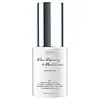What's inside
What's inside
 Key Ingredients
Key Ingredients

 Benefits
Benefits

 Concerns
Concerns

 Ingredients Side-by-side
Ingredients Side-by-side

Propanediol
SolventSalicylic Acid
MaskingZinc PCA
HumectantCentella Asiatica Root Extract
Skin ConditioningHydroxyethylcellulose
Emulsion StabilisingPhenoxyethanol
PreservativeLaminaria Digitata Extract
Skin ProtectingSaccharomyces Lysate Extract
HumectantChlorella Vulgaris Extract
Skin ConditioningSaccharide Isomerate
HumectantLactobacillus Ferment Lysate Extract
Skin ProtectingAllantoin
Skin ConditioningSodium Hyaluronate
HumectantWater
Skin ConditioningMethylpropanediol
SolventButylene Glycol
HumectantEthoxydiglycol
HumectantDimethyl Isosorbide
SolventSalicylic Acid
MaskingGlycerin
HumectantMarrubium Vulgare Extract
Skin ConditioningPentylene Glycol
Skin ConditioningPolylysine
Sodium Hyaluronate
HumectantEpigallocatechin Gallatyl Glucoside
AntioxidantHydroxyethylcellulose
Emulsion StabilisingXanthan Gum
EmulsifyingLecithin
EmollientSclerotium Gum
Emulsion StabilisingPullulan
Phenoxyethanol
PreservativeLactic Acid
BufferingIsoceteth-20
EmulsifyingTrisodium Ethylenediamine Disuccinate
Ethylhexylglycerin
Skin ConditioningOligopeptide-10
AntimicrobialSodium Hydroxide
BufferingWater, Methylpropanediol, Butylene Glycol, Ethoxydiglycol, Dimethyl Isosorbide, Salicylic Acid, Glycerin, Marrubium Vulgare Extract, Pentylene Glycol, Polylysine, Sodium Hyaluronate, Epigallocatechin Gallatyl Glucoside, Hydroxyethylcellulose, Xanthan Gum, Lecithin, Sclerotium Gum, Pullulan, Phenoxyethanol, Lactic Acid, Isoceteth-20, Trisodium Ethylenediamine Disuccinate, Ethylhexylglycerin, Oligopeptide-10, Sodium Hydroxide
 Reviews
Reviews

Ingredients Explained
These ingredients are found in both products.
Ingredients higher up in an ingredient list are typically present in a larger amount.
Hydroxyethylcellulose is used to improve the texture of products. It is created from a chemical reaction involving ethylene oxide and alkali-cellulose. Cellulose is a sugar found in plant cell walls and help give plants structure.
This ingredient helps stabilize products by preventing ingredients from separating. It can also help thicken the texture of a product.
This ingredient can also be found in pill medicines to help our bodies digest other ingredients.
Learn more about HydroxyethylcellulosePhenoxyethanol is a preservative that has germicide, antimicrobial, and aromatic properties. Studies show that phenoxyethanol can prevent microbial growth. By itself, it has a scent that is similar to that of a rose.
It's often used in formulations along with Caprylyl Glycol to preserve the shelf life of products.
Salicylic Acid (also known as beta hydroxy acid or BHA) is a well-known ingredient for treating skin that struggles with acne and clogged pores. It exfoliates both the skin's surface and deep within the pores to help clear out buildup, control oil, and reduce inflammation.
Unlike AHAs (alpha hydroxy acids), salicylic acid is oil-soluble. This allows it to penetrate into pores which makes it especially effective for treating blackheads and preventing future breakouts.
Salicylic acid is also known for its soothing properties. It has a similar structure to aspirin and can calm inflamed or irritated skin, making it a good option for acne-prone skin that is also sensitive.
Concentrations of 0.5-2% are recognized by the U.S. FDA as an over-the-counter topical acne product.
It can cause irritation and/or dryness if one's skin already has a compromised moisture barrier, so it's best to focus on repairing that before introducing this ingredient into your routine.
While salicylic acid does not increase sun sensitivity, it’s still important to wear sunscreen daily to protect your skin.
If you are looking for the ingredient called BHA or Butylated Hydroxyanisole, click here.
Learn more about Salicylic AcidSodium Hyaluronate is hyaluronic acid's salt form. It is commonly derived from the sodium salt of hyaluronic acid.
Like hyaluronic acid, it is great at holding water and acts as a humectant. This makes it a great skin hydrating ingredient.
Sodium Hyaluronate is naturally occurring in our bodies and is mostly found in eye fluid and joints.
These are some other common types of Hyaluronic Acid:
Learn more about Sodium Hyaluronate